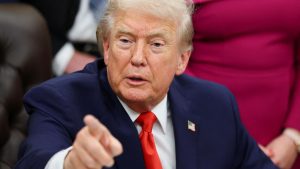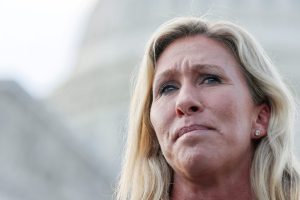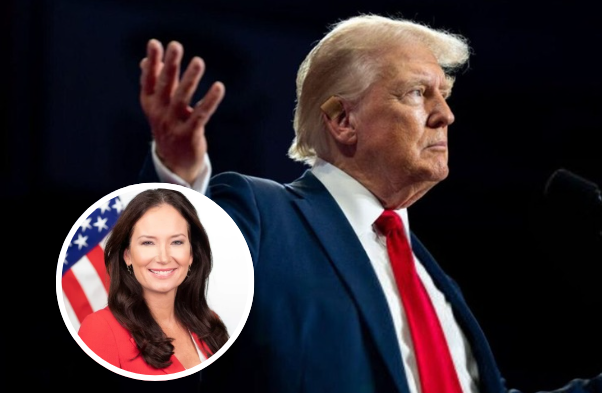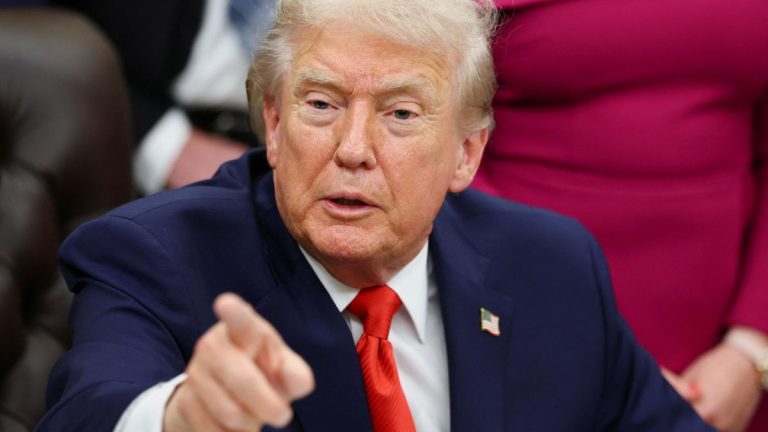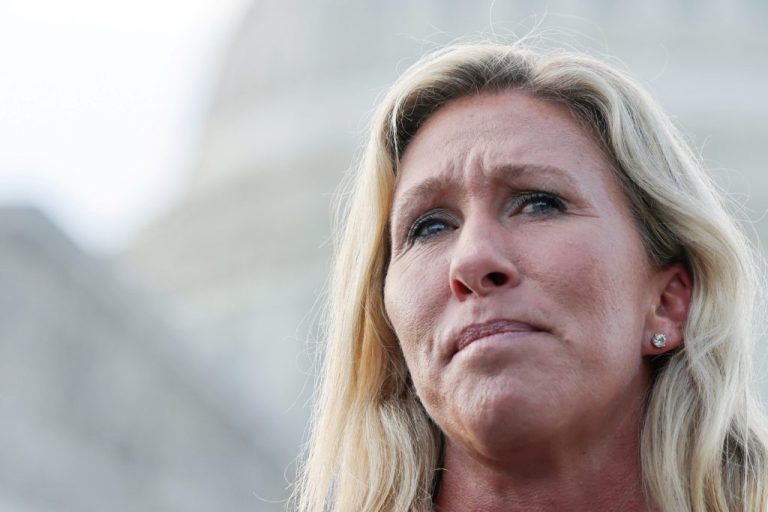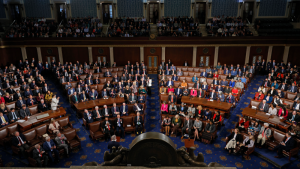Something’s Changing – Quietly
There’s a shift happening in Washington right now. You won’t hear it shouted on every network, but if you look closely, you’ll see the pattern.
It’s not chaos. It’s not noise.
It’s a slow, deliberate move. Strategic. Intentional.
And it’s led by people who know exactly where the real power is.
One of them is Brooke Rollins.
For months, there were signs something was coming. Quiet personnel moves. Closed-door meetings. Bureaucrats scrambling. Now the picture is starting to form—and it has Washington insiders on high alert.
Not because of a speech. Not because of a scandal.
Because of a decision that could upend how federal agencies have operated for decades.
It started small. With a department most Americans don’t think about every day.
And it may just be the first domino.
When Trump Talked About “Draining the Swamp,” This Is What He Meant
In 2016, “Drain the Swamp” became a slogan. But back then, few understood what it really meant—or how it could be done.
Critics laughed. Supporters waited.
Now, nearly a decade later, one of the most significant behind-the-scenes moves is underway. And it’s not a press conference. It’s not a tweet.
It’s location.
More specifically: relocation.
A federal agency you’ve probably never visited in person is about to be scattered across five different states.
Why? That’s the question.
And when you get the answer, you might see why people are calling it one of the boldest structural moves in recent memory.
But first, you have to understand the players.
The One Name Behind It: Brooke Rollins
Rollins is not a household name. But she’s been quietly influencing conservative policy circles for years.
A former Trump advisor and longtime advocate for shrinking federal overreach, Rollins now holds the title of Secretary of Agriculture.
And she’s using that role to do more than talk about reform—she’s acting on it.
While most of D.C. focuses on headlines and hearings, Rollins has set her sights on something deeper: the roots of the bureaucracy itself.
This isn’t about speeches. It’s about shifting the center of power—literally.
And Here’s the Hook — What Just Happened
In a Fox News interview that’s already making waves, Rollins confirmed what many suspected:
“We’re moving most of our headquarters staff out into the country.”
The U.S. Department of Agriculture will relocate the majority of its D.C.-based employees to regional hubs in five states.
The goal? According to Rollins: “Get closer to the people. Get closer to the farmers. Get closer to the mission.”
This isn’t symbolic. These are full-time federal employees being pulled out of the nation’s capital and embedded into the communities they serve.
Here’s Why It Matters
This isn’t just about the USDA.
It’s about precedent.
If this works—and if Trump continues this model—it could fundamentally reshape the federal government.
Here’s what’s on the table:
-
Decentralization of power from Washington, D.C.
-
Fewer lifetime bureaucrats shielded by proximity and politics
-
More accountability to the people actually impacted by federal policies
-
Reduced influence of lobbyists and special interests tied to the Beltway
And remember, this comes after earlier moves to restructure how U.S. attorneys are appointed. (See: Alina Habba’s appointment in New Jersey.)
There’s a method here. And it’s beginning to accelerate.
Not Everyone Is Applauding
As you’d expect, reaction in Washington was swift.
Unions representing federal workers blasted the plan, calling it disruptive and harmful.
Senate Democrats said it’s “another attack on career professionals.”
One D.C. lawmaker even described it as “strategic displacement,” meant to weaken agencies from within.
But Rollins isn’t backing down.
“This isn’t about hurting anyone. It’s about fixing what’s broken.”
She argues that keeping decisions local—and personnel accountable to local communities—will create more trust in government, not less.
Could Other Agencies Be Next?
The short answer: Yes.
Sources close to the administration have hinted that similar relocation reviews are underway in:
-
The Department of Homeland Security
-
Health and Human Services
-
The Department of Energy
If the USDA model holds, entire departments may see major portions of their workforce pushed out of D.C. and into the field.
A Move That Echoes Through History
You don’t have to agree with the politics to recognize what this is: structural reform.
Whether it’s successful or not, whether it grows or stalls, this effort marks a shift in how Washington sees itself—and how it functions.
Rollins said it best in her Fox News segment:
“This is literally what he [Trump] has tasked his cabinet to do—to deconstruct the administrative state in Washington, D.C.”
That’s not campaign talk. That’s action.
And now the rest of the federal workforce is watching.
Final Thought
Ten years ago, “Drain the Swamp” was just a chant.
Today, it’s boots-on-the-ground federal staff packing up their offices and preparing to relocate.
This isn’t a headline—it’s a movement.
The only question left: Who’s next?

Emily Johnson is a critically acclaimed essayist and novelist known for her thought-provoking works centered on feminism, women’s rights, and modern relationships. Born and raised in Portland, Oregon, Emily grew up with a deep love of books, often spending her afternoons at her local library. She went on to study literature and gender studies at UCLA, where she became deeply involved in activism and began publishing essays in campus journals. Her debut essay collection, Voices Unbound, struck a chord with readers nationwide for its fearless exploration of gender dynamics, identity, and the challenges faced by women in contemporary society. Emily later transitioned into fiction, writing novels that balance compelling storytelling with social commentary. Her protagonists are often strong, multidimensional women navigating love, ambition, and the struggles of everyday life, making her a favorite among readers who crave authentic, relatable narratives. Critics praise her ability to merge personal intimacy with universal themes. Off the page, Emily is an advocate for women in publishing, leading workshops that encourage young female writers to embrace their voices. She lives in Seattle with her partner and two rescue cats, where she continues to write, teach, and inspire a new generation of storytellers.

